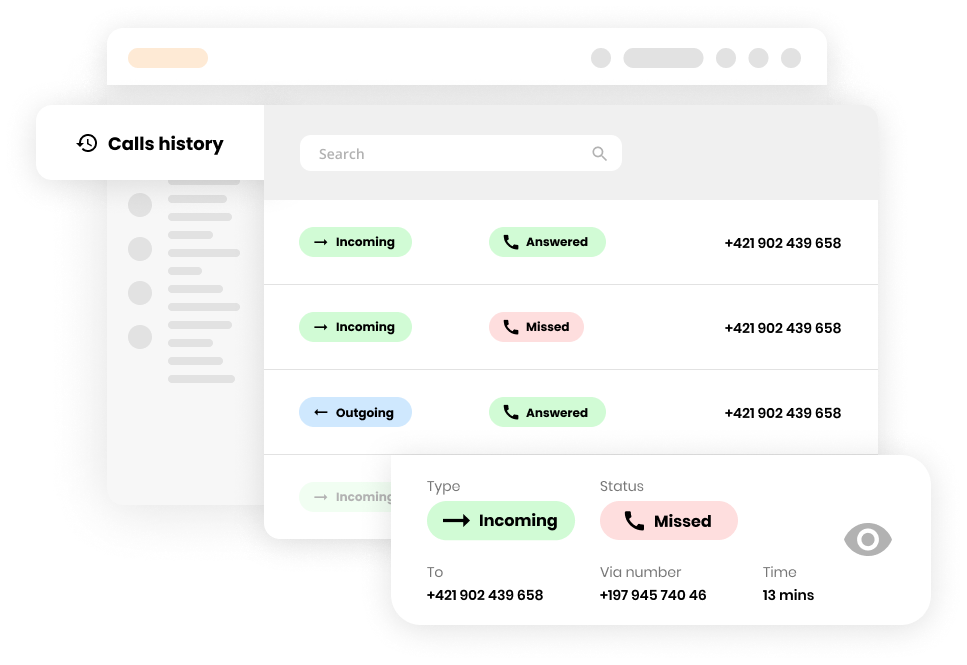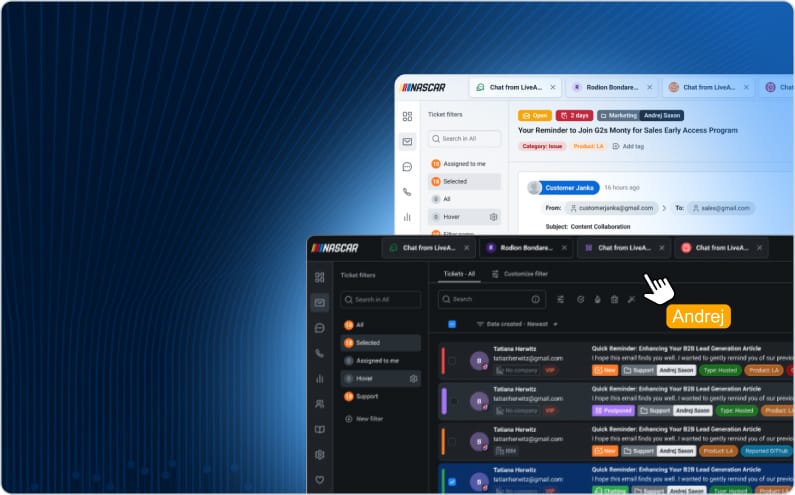What is call handling time?
Call handling time – typically referred to as average call handling time or average handle time (AHT) – is a key call center metric that is used to measure call center productivity, operational efficiencies, and agent performance. It shows the average duration of the customer interaction in a call center starting from the time a call is initiated to when the call is terminated. It includes call hold times, call transfers, and call wrap-up time. In most cases, improving AHT means improving customer satisfaction.
Calculating average call handling time
To calculate average call handling time, sum up total talk time, total hold time, total call wrap-up time and divide the result by the total number of calls handled.
- talk time (the time call center agents are speaking to customers)
- hold time (the time customers are put on hold during the phone call)
- wrap-up time (the time spent by agents doing any necessary follow-up tasks to complete a customer interaction)
The AHT formula looks something like this:
AHT = (total talk time + total hold time + total wrap-up time) / total calls handled

Wrap-up time (also known as wrap time or after-call work time) might be hard to evaluate as after-call tasks may vary depending on what the call center typically handles. That may include data entry, scheduling follow-ups, sending feedback forms, etc.
Calculating AHT helps with determining agent utilization so you can better allocate your resources, reward agents, or provide further training.
Create a seamless service experience
Boost your customer support efforts with LiveAgent’s call center features.
Frequently Asked Questions
What is handling time in a call center?
Call handling time, mostly known as average handle time (AHT), is one of the key call center performance metrics tracked in contact centers to measure agent efficiency. It shows the average duration of customer interactions from call initiation to talk time, hold time, call transfers, and after-call work time.
How do you calculate call handling time?
Average handling time is the sum of total talk time, total hold time, and wrap-up time divided by the total number of calls handled.
How can call centers reduce call handling time?
Providing agents with the right call center tools and allowing easy access to knowledge resources can help reduce call handling time. Firstly, with a comprehensive knowledge base, customers can find answers to the most common customer questions on their own. Secondly, an internal knowledge base is an essential component of agent training and a valuable resource that can help agents resolve issues faster and thus reduce AHT and improve customer experience.
After reading about call handling time, you might want to explore how average handle time (AHT) affects your customer service. This article explains the importance of AHT and offers tips on how to calculate it effectively. Additionally, discover the top call center industry standard metrics to benchmark your performance. These metrics help you understand key areas like service level and customer satisfaction, ensuring your team delivers the best support possible.
Discover how to efficiently manage high call volume in call centers with strategies like adding support channels, developing self-help resources, optimizing IVR menus, and offering callbacks. Enhance customer satisfaction and streamline operations by making informed staffing decisions. Explore LiveAgent's solutions for effective call center management. Try a free demo today!

 Български
Български  Čeština
Čeština  Dansk
Dansk  Deutsch
Deutsch  Eesti
Eesti  Español
Español  Français
Français  Ελληνικα
Ελληνικα  Hrvatski
Hrvatski  Italiano
Italiano  Latviešu
Latviešu  Lietuviškai
Lietuviškai  Magyar
Magyar  Nederlands
Nederlands  Norsk bokmål
Norsk bokmål  Polski
Polski  Română
Română  Русский
Русский  Slovenčina
Slovenčina  Slovenščina
Slovenščina  简体中文
简体中文  Tagalog
Tagalog  Tiếng Việt
Tiếng Việt  العربية
العربية  Português
Português 









